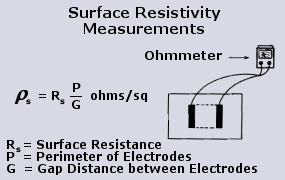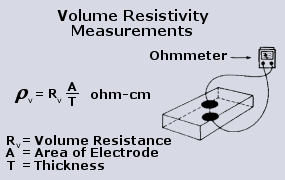How to test resistivity
Source:Original Site Release time:2015-08-28 Click: Editor:SUGO Networks
Resistivity Test Methods
Surface Resistivity 
For thermoplastic materials intended to dissipate electrostatic charges, surface resistivity is the most common measurement of a material抯 ability to do so.
A widely accepted surface resistivity test method is ASTM D257. It consists of measuring the resistance (via an ohm meter) between two electrodes applied under load to the surface being tested. Electrodes are used rather than point probes because of the heterogeneous makeup of compounded thermoplastics. Simply touching the surface with a point contact may not give readings consistent with the overall part (readings of this type are often insulative even when the part is actually conductive).
It is also important to maintain good contact between the sample and electrodes, which can require considerable pressure. The resistance reading is then converted to resistivity to account for the dimensions of the electrodes which can vary depending on the size and shape of the test samples. Surface resistivity is equal to resistance times the perimeter of the electrodes divided by the gap distance, yielding ohms/square.
Volume Resistivity 
Volume resistivity is useful for evaluating the relative dispersion of a conductive additive throughout the polymer matrix. It can roughly be related to EMI/RFI shielding effectiveness in certain conductive fillers.
Volume resistivity is tested in a similar fashion to surface resistivity, however electrodes are placed on opposite faces of a test sample. ASTM D257 also refers to volume resistivity, and a conversion factor again based on electrode dimensions and part thickness is used to obtain the resistivity value from a resistance reading. [Volume resistivity is equal to resistance times the surface area (cm2) divided by the thickness of the part (cm) yielding ohm-cm.]
